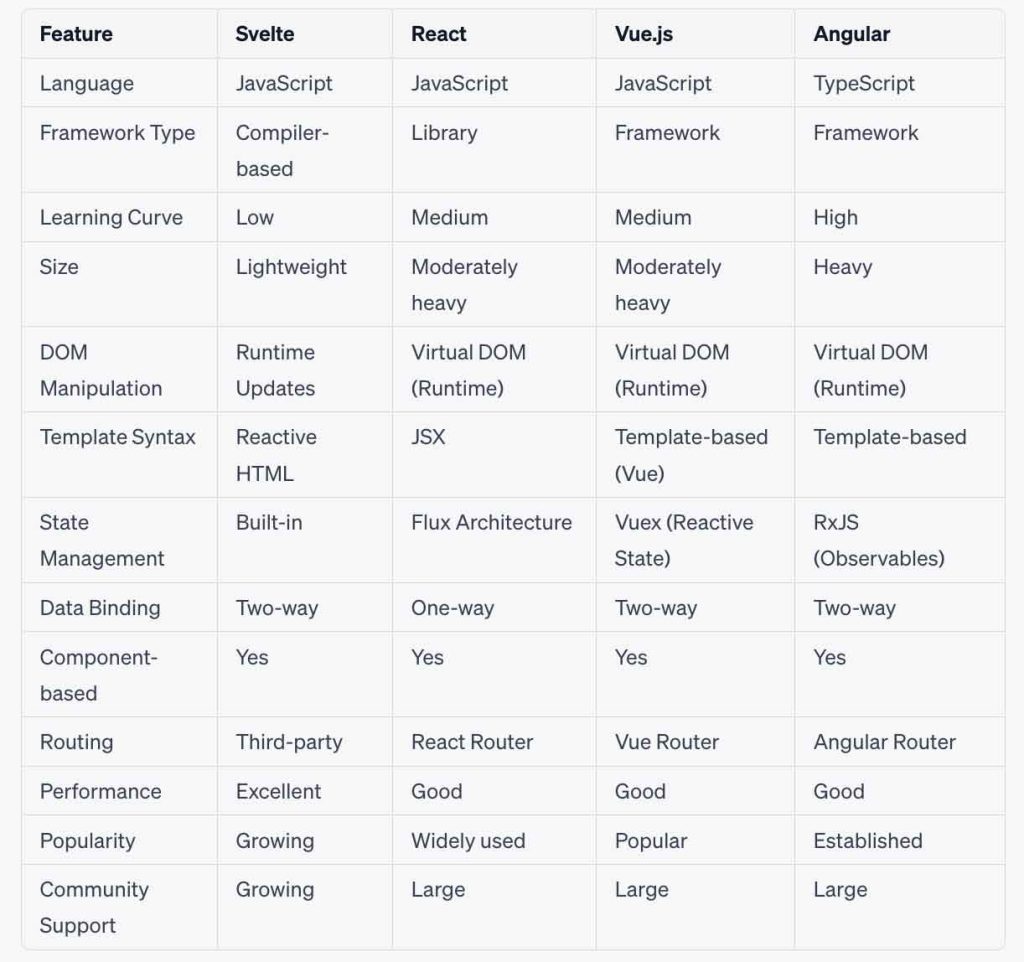Svelte is a modern JavaScript framework for building user interfaces. It was created by Rich Harris and first released in 2016. The main distinguishing factor of Svelte lies in its approach: while traditional frameworks like React and Vue do most of their work in the browser, Svelte shifts that work into a compile step that happens when you build your app.
At its core, Svelte is a component framework — you build an application out of isolated, reusable components. However, unlike frameworks such as React and Vue, Svelte compiles these components at build time into highly efficient imperative code that directly updates the DOM. This leads to faster initial loading, smoother updates, and smaller bundles, making Svelte applications highly performant.
The main difference between Svelte and other frontend frameworks is its absence during runtime. With frameworks like React or Vue, the browser loads the framework’s code and uses it to interpret your application code. In contrast, Svelte runs at build time, converting your components into highly efficient, imperative code that surgically updates the DOM. As a result, you’re not shipping framework code to the client, resulting in faster load times and a more reactive user interface.
Svelte’s syntax is designed to be easily readable and to express complex ideas succinctly. One of the defining features of Svelte is its reactivity model. It’s significantly simpler and requires less boilerplate than many other frameworks. With Svelte, you can create reactive statements using simple assignments and auto-updating statements, which are signaled by a prefix of $:.
One of the appealing aspects of Svelte is its ease of integration with existing projects. Since Svelte components are compiled into standalone JavaScript modules, they can be imported into any other JavaScript application, making Svelte a practical choice for incrementally enhancing existing apps.
Though younger than React and Vue, Svelte has a rapidly growing community and an increasingly robust ecosystem. It has comprehensive official documentation, an interactive tutorial, and numerous community resources. In terms of tooling, Svelte also has strong support with a variety of integrations available for popular tools like webpack and Rollup.
To get started with Svelte, you can use a template project that sets up everything you need for a Svelte app:
bashCopy codenpx degit sveltejs/template svelte-app
cd svelte-app
npm install
npm run dev
Then, you can create Svelte components using the .svelte extension and write your markup, script, and styles in one file:
svelteCopy code<script>
let count = 0;
function handleClick() {
count += 1;
}
</script>
<button on:click={handleClick}>
Clicked {count} {count === 1 ? 'time' : 'times'}
</button>
<style>
button {
color: purple;
}
</style>
Svelte’s purposes and functionality overlap with several other frameworks, including React, Vue.js, and Angular. The chart below compares the features of Svelte with those alternative frameworks. This information is helpful for understanding Svelte and deciding whether it is the best fit for your technical stack.

Svelte provides an innovative approach to building web interfaces by shifting the heavy lifting from the browser to the build step. This results in faster, more efficient applications with a developer-friendly syntax. Its focus on simplicity and performance sets it apart in the crowded field of JavaScript frameworks and makes it a compelling choice for modern web development. Despite being relatively new, it’s already seen a growing adoption and offers a promising future.